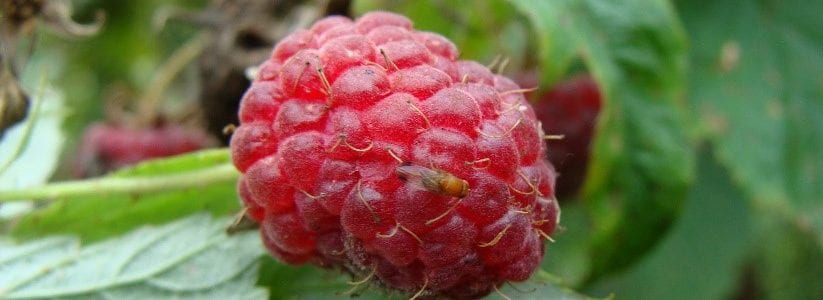We have caught SWD at all but one of the seven tart cherry sites we are monitoring in Western NY, Wayne and Ontario Counties. Counts are still low and it is likely that the hot and dry weather, as well as insecticide protection, has held things in check. Weather has turned cooler and rains have brought needed water to crops – SWD will like this, too.
Our low numbers are in stark contrast to the high numbers of SWD being reported this week by Nikki Rothwell, Michigan State University, in traps set in Michigan tart cherry orchards.
NOTE: First trap catch of SWD signals it’s time for insecticide protection in tart cherries. And... most berry sites in the statewide SWD monitoring network are now at sustained catch!
Trap catch results for tart cherry sites close to Lake Ontario in Wayne County:
- Two are at continuous catch – third week in a row.
- One has had discontinuous catch – SWD caught three times, but with intervening weeks with zero catch.
Trap catch results for tart cherry sites inland in Wayne and Ontario Counties:
- One is at sustained catch.
- Two are at first catch.
- One has had zero SWD catch to date.
Cherries are ripe and soft and harvests are getting underway. Orchards in Western NY that have been harvested or will be harvested soon should escape SWD infestation without significant insecticide expense. If harvest won’t occur for another week or more, insecticide protection on the crop needs to be maintained at 7-day intervals; immediately reapplying after rain wash off.
A 50-fruit sample was collected this week from all the orchard blocks in which we have traps and checked via salt flotation. One of the samples had evidence of SWD eggs, no larvae. All other samples had no SWD in them.
Here’s the blog link for the tart cherry SWD insecticide and SWD management info, which I posted last week: https://blogs.cornell.edu/swd1/2018/07/10/swd-caught-in-traps-set-in-tart-cherry/
If, after harvest, there is remnant fruit on the ground that might put nearby cherry orchards or berry plantings at risk, consider a single application of Asana XL (2ee) on the fruit remaining on the ground (see quick guide to insecticides for treating dropped fruit). Keep in mind that the dropped fruit would have insecticide residue on it, so any application to dropped fruit should be delayed to take advantage of that residual insecticide coverage.

